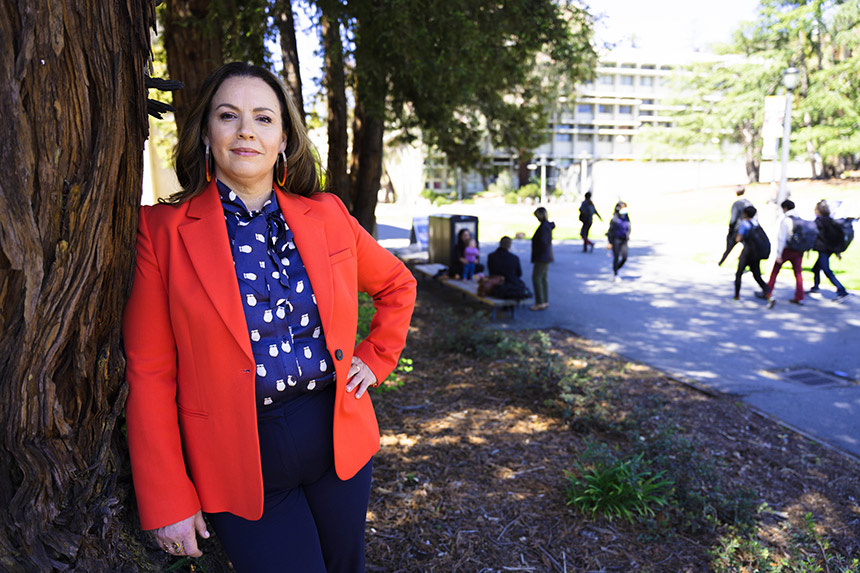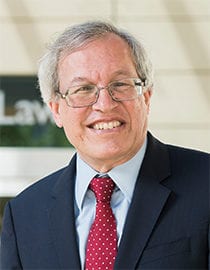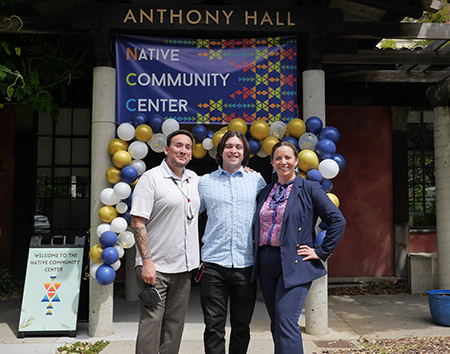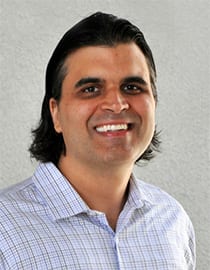
- Details
- By Gwyneth K. Shaw - Berkeley Law
When Berkeley Law Dean of Admissions and Financial Aid Kristin Theis-Alvarez heard about the University of California system’s plan to cover tuition and student service fees(opens in a new tab) for in-state students enrolled in federally recognized Native American, American Indian, and Alaska Native tribes, she was elated: Creating a pathway to law school for Native American students has been a passion-driven project of hers(opens in a new tab) for years.
But Theis-Alvarez (who most students and others call Dean Alvarez) also immediately knew Berkeley Law needed to do more, because the Professional Degree Supplemental Tuition (PDST) makes up the bulk of law students’ costs: $21,334 per semester for in-state residents this academic year, on top of the $5,721 tuition per semester. All UC professional school students pay PDST, which is set by the UC Regents.
This piece originally appeared at Berkeley Law. Republished by Native News Online with permission.

She sought and gained approval from Dean Erwin Chemerinsky to cover those fees for qualifying students, using existing financial aid dollars. New students, as well as continuing students who meet the criteria, will start receiving the gift aid this fall.
“Native Americans are very underrepresented in law schools and the legal profession. It is very important for Berkeley Law to provide opportunities for Native American students,” Chemerinsky says. “This also is part of an important, larger effort to create a top program in Indian Law at Berkeley Law.”
For now, California students who are members of tribes not recognized by the federal government aren’t eligible for the UC’s Native American Opportunity Plan. But there are private sources of aid, including a new $2.5 million scholarship fund from the The Federated Indians of Graton Rancheria.
Transformative move
Berkeley Law Professor Seth Davis, who studies and teaches Indian Law and has been a key mentor for Native students since joining the faculty in 2018, says the new program will help signal the depth and breadth of the school’s engagement with Native students.
“The efforts that Dean Alvarez has spearheaded at the law school to build upon the UC’s commitment will really be transformative for our ability to recruit even more Native students to the community — to show them that they are not only welcome, but will be supported materially as well as socially by our community,” he says. “There’s a number of top law schools that are working to expand federal Indian law programs and to find ways to support Native and Indigenous students. And I think that this program will help distinguish Berkeley in that group, by making it possible for Native students to attend a top school like this.”

Ultimately, Theis-Alvarez says, she hopes Berkeley Law can raise additional money so the school can offer the same deal to enrolled members of federally-recognized tribes who are not California residents. She’s also interested in exploring partnerships with outside groups to ensure in-state members of tribes not recognized by the federal government can also have access, along the lines of what Graton has done.
“To make Berkeley Law a destination law school for Native American students who are looking to earn their J.D., we have to take the next steps,” she says.
Asunción Hampson-Medina ’23, co-chair of the Berkeley Native American Law Student Association(opens in a new tab) (NALSA), says the new aid will have a significant impact on the school’s Indigenous population. By lowering the cost barrier, he says, more students will be able to attend law school and also be able to afford to work in their communities after they graduate. Native and Indigenous lawyers make up less than 1% of the profession.
“This aid initiative is one step in the right direction for making the legal field more accessible to Indigenous people and I hope programs like this will continue and be expanded here and at other law schools,” Hampson-Medina says. “So many barriers to political and economic power have been put up against Indigenous people for centuries, and this is just one way to make up for that injustice and support Indigenous students who want to succeed in the legal field.”
Long-term payoff
Offering additional gift aid is the latest step in a years-long path to build a community, and a scholarly home, for Native students and Indian Law at the school. While there are more than 100 federally-recognized tribes in California and numerous others seeking federal recognition, Berkeley Law has not always been at the top of the list of schools where Native American applicants can see themselves enrolling.
“Chipping away at the barriers to attendance — and cost is huge — is one part of changing this,” Theis-Alvarez says. “Building pathways to and through law school, and into the profession, is another.”

That change is happening, thanks to the arrival of Davis — who picked up the mantle of the late Professor Philip Frickey, regarded as the nation’s top expert in Indian law and policy until his death in 2010 — and the momentum built by Theis-Alvarez and her team through outreach to prospective students.
Students revived the NALSA chapter, which had been dormant for some time, in 2018. They went on to host the National NALSA Moot Court Competition early in 2020, and have continued to build community in spite of the obvious challenges of the last two years.
Hampson-Medina says NALSA has been his favorite part of law school.
“I was involved in Native student organizations as an undergraduate, so when I came here and found out about NALSA I immediately felt at home,” he says. “The leaders of the organization in the class ahead of me became my best friends, and I have tried to pay it forward by making NALSA an inclusive space whose primary goals are to support Indigenous students in school and work and build community.”
Group members have hosted social events, a speaker series with mutual aid organizations, attended the FedBar Indian Law conference, and “become a family along the way,” he says.
That kind of experience is what Theis-Alvarez wants to expand with additional aid.
“The Native American Opportunity Plan, combined with our decision to offset PDST, gives us an ability to go out there and say unequivocally: This is a place that wants you, that supports you, that will invest in you, and that has a community for you,” she says. “We’re not only going to get you through law school, but we’ll help you go on and do the work that’s why you came to law school in the first place.”
Building trust is also crucial, she adds.
“It’s important that we are not making a short-term commitment. This isn’t something we say we’re going to do for five years, or only because a donor made it possible for some period of time. It’s something that the law school is making a commitment to for the long haul, because it is fundamentally the correct thing to do. It can be relied upon — and more importantly for our purposes, it can be built upon,” Theis-Alvarez says. “That’s what I see my role as: To help create systems and programs that build rather than erode trust and to use these as the foundation for a future legal profession that looks different than the one of the past. My team does this work in a lot of areas, but it is particularly significant in terms of our relationship with Native Nations and tribal communities.”
Community impact
The new aid will also help position Native students to fulfill the ideals that brought them to law school in the first place, Davis says — including while they’re students. They can get involved with the student-led Native American Legal Assistance Project, or work to support Tribal Peoples through the school’s Environmental Law Clinic, for example, with more opportunities coming.
“Part of the impact of this gift aid is that we can say to our Native students, not only can you do meaningful work in Indian Country while you’re here, you will also be in a position to leave here with excellent training as a lawyer and to have the financial security so that you’re able to step in and do work with your tribe, to work in Indian country, for the start of your career,” he says.
Theis-Alvarez is mindful that while big strides have been made in recent years, there is a long legacy of Native American and Indigenous students at Berkeley. While that group may be somewhat small in terms of numbers, she hopes this new program will spark a conversation and bring alumni together with current students and those considering law school.
“Money is important because law school is expensive, but money doesn’t address everything. Community is key,” she says. “We need to recognize and honor the legacy of people who came before under very different circumstances, and who went on to do good work. I’ll feel proud of what’s been accomplished once we’ve built that full circle.”
The school’s commitment to supporting Native students and efforts to bring in Native faculty are what drove Hampson-Medina to attend, and older NALSA students convinced him Berkeley Law was an exciting place to be. If the community continues to grow, he and other NALSA members will feel like their efforts were worthwhile.
“I hope that the law school and the campus broadly continues to create and support programs that are meant to attract and retain Indigenous students once they see how successful they can be,” he says. “It can be difficult for Indigenous students to try and navigate spaces that historically excluded us and our perspectives. But if we can create a home for them here, then we can increase our representation in the field and ensure that the voices of our communities are never excluded again.”
This article has been updated to clarify the price of tuition per semester.
Help us defend tribal sovereignty.
At Native News Online, our mission is rooted in telling the stories that strengthen sovereignty and uplift Indigenous voices — not just at year’s end, but every single day.
Because of your generosity last year, we were able to keep our reporters on the ground in tribal communities, at national gatherings and in the halls of Congress — covering the issues that matter most to Indian Country: sovereignty, culture, education, health and economic opportunity.
That support sustained us through a tough year in 2025. Now, as we look to the year ahead, we need your help right now to ensure warrior journalism remains strong — reporting that defends tribal sovereignty, amplifies Native truth, and holds power accountable.
 The stakes couldn't be higher. Your support keeps Native voices heard, Native stories told and Native sovereignty defended.
The stakes couldn't be higher. Your support keeps Native voices heard, Native stories told and Native sovereignty defended.
Stand with Warrior Journalism today.
Levi Rickert (Potawatomi), Editor & Publisher
